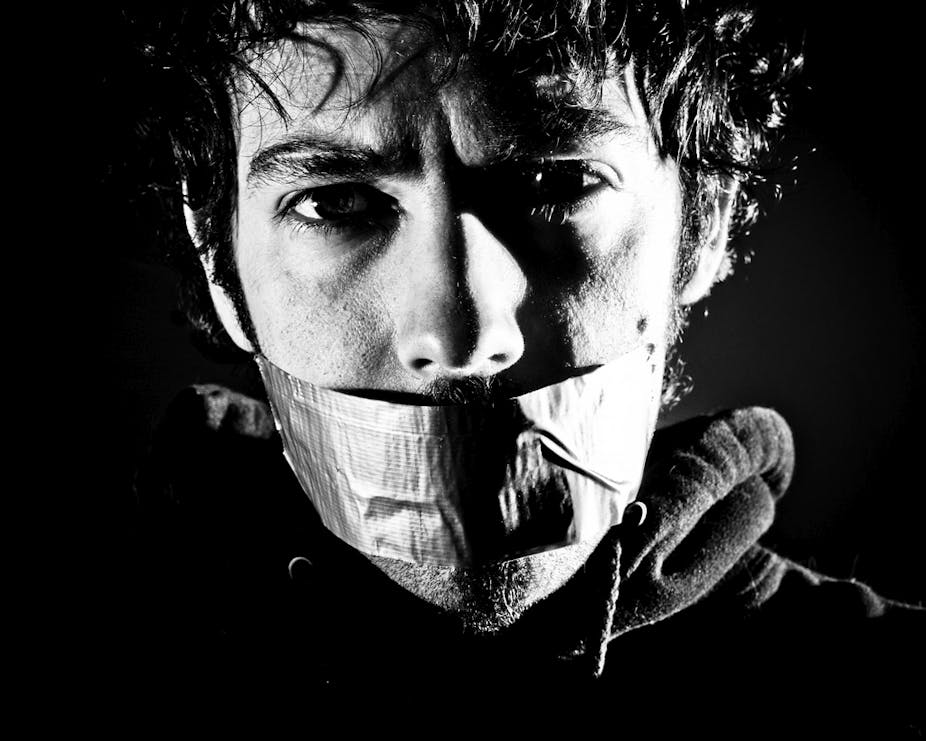One news item buried among all the discussion about the early election announcement, Craig Thomson’s arrest and Moses Obeid’s testimony to ICAC yesterday was a statement from the Attorney-General, Nicola Roxon, that a tiny clause of the proposed Human Rights and Anti-Discrimination Bill 2012 will be redrafted (or removed). This is worth bringing to light because the few words in this clause – “offend” and “insult” - have caused alarm and dominated public debate over the broader question of reforming Australia’s anti-discrimination laws.
The question remains as to whether the removal of this clause will address the free speech concerns and allow more debate about the other 154 provisions.
Considering the ambitious and competing instructions they were given, the drafters of the proposed Human Rights and Anti-Discrimination Bill 2012 have done a remarkably good job, with the exception of that one clause. The “offend, insult or intimidate” clause, 19(2)(b) has been the subject of most of the public debate (along with exemptions for religious groups), and has led to many accusations that a bill supposedly designed to “consolidate” federal anti-discrimination laws goes too far and needs to be reined in.
The bill itself is the outcome of two-and-a-half years of consultation by the government, after it announced in 2010 that it would “consolidate” federal anti-discrimination laws as part of Australia’s Human Rights Framework. The team’s instructions were to “consolidate” the five existing anti-discrimination acts into one, add sexuality and gender identity as new grounds, and make the law more consistent and less complex.
These goals in turn were designed to make the law easier for individuals and businesses to understand. Two qualifications were made. One was explicit: do not diminish any existing protections. The other was not stated up front but has become clear: do not touch the churches’ exemptions.
While consolidation might have looked easier to the government than introducing a bill of rights (as the National Human Rights Consultation Report suggested), this was never going to be a straightforward exercise.
The reality is that the existing acts – including the Racial Discrimination Act and the Sex Discrimination Act – are each very complex, containing at least ten different definitions of discrimination (as well as other definitions of vilification and harassment). These acts set out a multitude of prohibitions and are qualified by an extraordinary and inconsistent array of exceptions. They pose a regulatory challenge and there is no doubt that their complexity and inconsistency justify the simplification exercise.
The draft bill that has emerged is a remarkable achievement, containing one definition of discrimination, a simplified prohibition akin to the one used in the Racial Discrimination Act, and a general justification provision to replace a host of specific and technical exceptions. When the bill was released as an Exposure Draft last November and sent off to the Senate Legal and Constitutional Affairs Committee for review, the consultation revealed a few problems, including the one that prompted Roxon’s announcement today.
What does clause 19(2)(b) actually say and do?
It is found in the part of the bill that defines discrimination. The new definition of discrimination is fairly unremarkable, except for this particular subclause. In clause 19(2), the drafters sought to make clear “to avoid doubt” that discrimination includes harassment, as the courts have told us many times over the years.
But here we get to the crux of the problem. Instead of simply saying discrimination includes “harassment”, clause 19(2)(b) adds that discrimination can include “other conduct that offends, insults or intimidates” another person because of their protected attribute.
These particular words appear in both the definition of sexual harassment in the Sex Discrimination Act and the definition of racial vilification in the Racial Discrimination Act, both of which are retained unchanged in the bill. The numerous and vociferous objections to clause 19(2)(b) related to a concern that it could be interpreted as a vilification clause that applies to all 18 attributes in the act, not merely race.
While Roxon publicly stated in an opinion piece for The Australian in early January that it was not the government’s intention to extend the vilification provisions beyond race to all attributes, the provision could still be interpreted in that way.
A second concern is that it omits the safeguards that are in the racial vilification provisions, such as an objective test of “offends, insults or humiliates”, and the free speech provisions that protect speech or conduct that is reasonable to the average person or is a fair and accurate report or comment on a matter of public interest.
The vilification provisions are designed to curb racial hate speech that undermines the dignity and inclusion of ethnic groups. They have operated since 1995. But as former justice James Spigelman rightly asserted in his Human Rights Day Oration, if the bill has the effect of making conduct unlawful simply because it causes someone offence, it goes too far. Democracy depends on free speech and, as Spigelman adds, “freedom to offend is an integral component of freedom of speech”.
No-one has defended or supported clause 19(2)(b), so it is not at all surprising that the Attorney-General has finally asked for alternatives, including removal of the clause. We needed to have this debate and ensure this correction.
The question, however, is whether the objections and cries of outrage over this one subclause have tainted public opinion about the bill generally.
Hopefully Roxon’s announcement has doused this fire and can clear the air to allow for good public debate about the other provisions of a bill that would bring significant clarity, consistency and common sense to the field of Australian anti-discrimination law.

